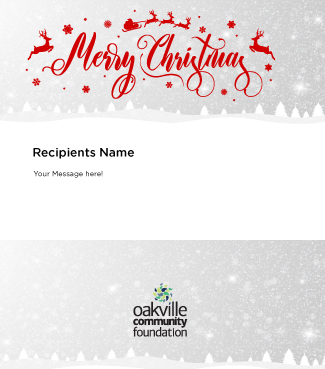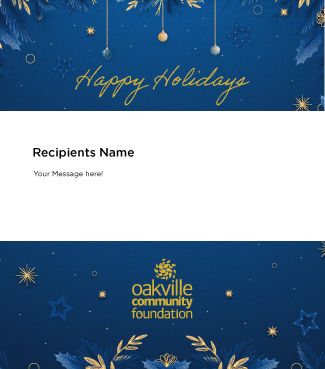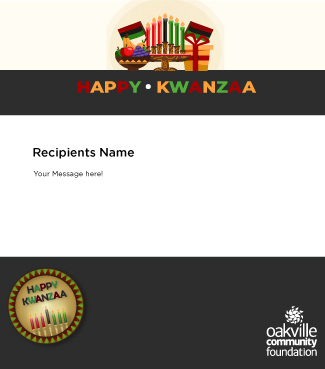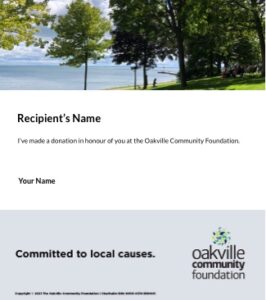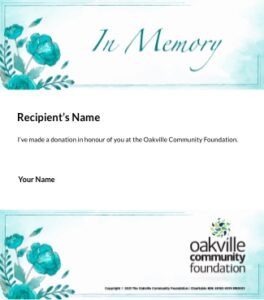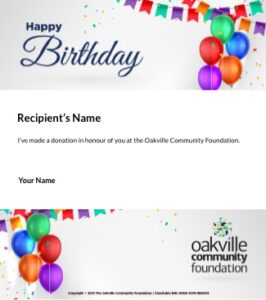The Oakville Resiliency Report is timestamped in September 2020, but the COVID-19 pandemic is not over. To that end, the Oakville Community Foundation is publishing updates to the report every Friday for the next six weeks, as part of a new #WeekendReads series. These updates will build on information shared in the report and share new information that is now available. Click here for previous installments.
Sources can be found here or by clicking the superscript within the text.
Income, race and gender continue to be an important influence on how we experience the pandemic. Approximately 60% of our risk for illness, like COVID-19, is dependent on social determinants of health: the broad range of personal, social, economic and environmental factors that determine individual and population health. Another 25% is due to the variations in the health and social care that individuals access and receive.¹ As such, gaps have widened during the pandemic when these three key social determinants are assessed: low-income households, racialized communities, and gender.
LOW-INCOME HOUSEHOLDS
The gap between wealthy and low-income families continues to widen in Oakville during the pandemic. As we reported in September, Oakville has the highest median household income as well as the highest number of food bank users in the region. It also has the largest population of private schools and the highest share of youth living in poverty (1 in 8).²
Lower-income Ontarians in precarious employment have been most affected by the new lockdowns and the State of Emergency. In December the unemployment rate rose for the first time since April 2020 to 8.6%.³ Halton entered into lockdown on December 26. Part-time employment declined with the new business closures particularly in non-essential work in the retail and hospitality services. All in all, by the end of 2020, 1.1 million Canadians in the labour force were affected by COVID-19 through lost employment or reduced hours.³
Unemployment has impacted income levels, and there continues to be a pattern between income and rate of COVID-19 in neighbourhoods in Oakville, as evidenced by Halton Region’s Cases by Neighbourhood map. South Central Oakville, with the postal code L6K, continues to see a higher rate of COVID-19 with 160 per 10,000 while South East Oakville, with the postal code L6J, sees a lower rate of COVID-19 with 122.8 per 10,000. These neighbourhoods are right beside each other with their main difference being average income level.⁴
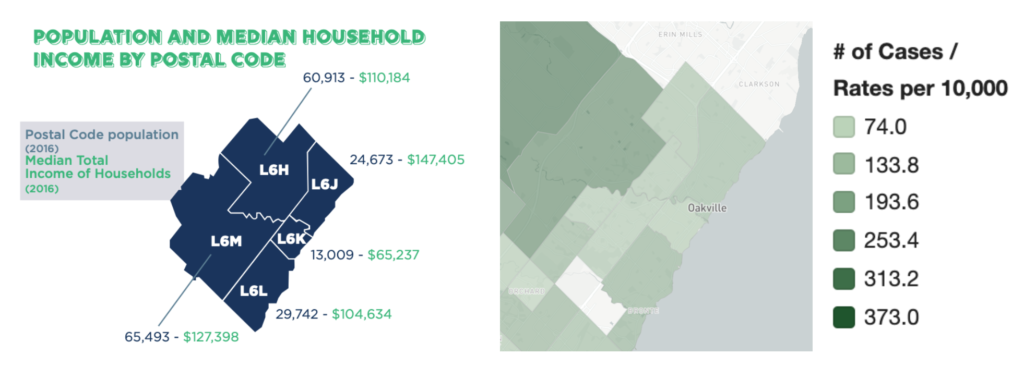
RACIALIZED COMMUNITIES
Canadians self-identifying as a visible minority continue to see their unemployment rate more than 1% higher than the general population at 9.9% in December.³
New data suggests that racialized communities in the Greater Toronto Area are also over represented in positive COVID-19 cases. People in the GTA who identify as Arab, Middle Eastern, West Asian, Latin American, South East Asian or Black were 6-9 times more likely to test positive for COVID-19 than those who did not identify as a visible minority.¹
The COVID-19 pandemic has magnified health, racial and social inequalities on First Nations reserves. The rate of reported COVID-19 cases of First Nations people living on reserves is nearly twice as high as the general population. To date, the fatality rate on reserves is approximately one-third of the fatality rate of the general population.⁵ Many reserves do not have consistent access to health care, housing or social services and lack reception or communications to reach virtual care.
WOMEN
The economic security of women has been disproportionately impacted by COVID-19 and labour force participation continues to decline. More than ten months ago now, a large group of women left the Canadian workforce to take care of their children or other family members. These women have yet to return and employment gains have remained weak for single mothers with children under the age of 12 due to the uncertainty around school.⁶
Women in Oakville and Halton continue to lead all positive cases over men by slightly more than 1%.⁷ This is also true nationally, with 51.6% of reported cases among women.⁸
Approximately 56% of women have positions in the Five “C” careers that include: caring, clerical, catering, cashiering and cleaning.⁹ These jobs have been hardest hit by COVID-19 business closures and lockdowns, particularly retail and hospitality. In the last year, Personal Support Workers (or PSWs) have become known as one of the most dangerous jobs in Canada. Approximately 90% of PSWs are women and are working on the front lines in long-term care facilities.¹⁰
¹Wellesley Institute – Toronto and Peel report race-based and socio-economic data
²Oakville Community Foundation – Vital Youth Report: A Tale of Two Childhoods
³Statistics Canada – Labour Force Survey, December 2020
⁴Halton Region – Status of COVID-19 by Neighbourhood
⁵CTV News – A year later, Indigenous communities are fighting twin crises: COVID-19 and inequality
⁷Halton Region – Status of COVID-19 by Demographic
⁸Government of Canada – Epidemiological Summary of Canada’s COVID-19 Cases: Demographics
⁹Community Foundations of Canada – Gender Equality in Canada: Power
¹⁰National Observer – Personal support workers risk their own lives to care for others
